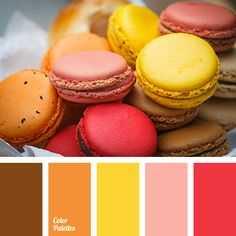

How Big Food Is Using Natural Flavors to Win Consumer Favor
As consumer concern rises over artificial ingredients, more food companies are reconstructing recipes
GOLDEN VALLEY, Minn.—Food scientists at General Mills Inc. have spent years testing hundreds of combinations of fruits, vegetables and spices to replace the artificial food coloring in Trix. Still, they couldn’t find matches for the neon-green or turquoise corn puffs in the multihued breakfast cereal.
In consumer tests, “Some people told us they hadn’t seen that color turquoise in any food besides Trix, so we knew even if we could match it, it wouldn’t look natural,” said Kate Gallager, a cereal developer at General Mills. She decided to leave out both colors in the new cereal with natural colors and flavors to be launched in January.
At the General Mills’ lab here, researchers are responding to Americans increasingly rejecting artificial flavorings, dyes, and preservatives and demanding food with ingredients that they can find in their own pantries.
The phenomenon has roiled the food industry in recent years as reconstructing recipes, especially of packaged-food items, isn't a piece of cake. It requires consumer food companies to find acceptable alternatives and to manage any side effects, from higher costs to unintended changes to taste or texture that could risk alienating loyal consumers.
The new environment is frustrating for some in the food industry after decades of technological advances to make packaged food cheaper, longer lasting and more flavorful.
“A lot of consumers think they can just swap this for that, but it isn’t as easy as it sounds,” said David Garfield, head of the consumer products practice at consulting firm AlixPartners. “As soon as you tinker with one thing, that affects another, and you’re trying to keep everyone happy.”
Candy maker Hershey Co. said in February that it would begin swapping out ingredients to create a “simpler, shorter” list of items that consumers “recognize and trust.” Some changes were relatively easy, like switching to cane sugar from genetically modified beet sugar.
But removing emulsifiers like polyglycerol polyricinoleate required adding more cocoa butter so that the chocolate would continue to flow into the molds properly. That increased cost and added trace amounts of fat.
“It is a little more complicated when you’re not a corner chocolate shop,” said Will Papa, Hershey’s chief of research and development.
Colors offer varying levels of difficulty. Blue and green are among the most challenging colors to replicate because of the instability of similar colored fruit juices when exposed to heat or different acidity levels.
Ferrara Candy Co. tried 50 different formulations over eight months to find colors from natural sources that worked in its gummy bears before settling on spirulina extract and carrot juice to get green and orange colors, respectively, said Jamie Mattikow, Ferrara’s chief commercial officer. Failed attempts made the gummy bears less gummy.
Kraft Heinz Co. was able to develop new coloring for its iconic macaroni and cheese using turmeric, paprika and annatto extract from seeds of achiote trees. Online reviews indicate consumers don’t notice a change in flavor. But eliminating preservatives shortened the product’s shelf life to 8½ months from 10.
In years past, some efforts to go natural fell flat. John Ruff, former head of research and development at Kraft, recalls the company in the 1990s trying a version of Kool-Aid colored with natural sources. It was pulled because of poor sales.
Mr. Ruff, like many industry veterans, says the fear of artificial dyes and other added ingredients lacks scientific basis. “Consumers have been pushing for this, and the food industry hasn’t done enough to push back and explain that these ingredients are just as safe, and in some cases safer,” said Mr. Ruff, also a former president of the Institute of Food Technologists, a nonprofit group that promotes food science. Sodium bicarbonate, for instance, may sound alarming but it is just baking soda, he said.
In the past decade or so, a wave of consumer advocacy groups, food writers, bloggers and other critics have said these ingredients—even when approved by the Food and Drug Administration—are unhealthy or unsafe, fueling demands for simpler food. Sales of many mainstream brands that make products with artificial ingredients have suffered while those of smaller natural-food labels have grown.
Large food companies are competing to respond.
General Mills made its pledge in June to cut artificial colors and flavors from its cereals by the end of 2017. Rival Kellogg Co. announced plans in August to remove synthetic food dyes from cereals such as Froot Loops and its Nutri-Grain bars by 2018, though it still relies on artificial food coloring called Red 40 and Yellow 6 for its Pop-Tarts.
For Trix, General Mills tested each potential new color by putting it in milk and cooking it in pancake batter. For a vibrant red, it tried tomatoes, but the taste was too strong. Beets turned dark purple when heated. Spinach stayed a nice green color in milk, but turned grayish olive when cooked. Other ingredients that passed those tests—like strawberries—made the corn-puff dough too watery.
After dropping two colors, the new Trix cereal has purple, orange, yellow and deep-red puffs, and has 10 more calories per serving from the added fruit juices.
“It is about finding the right balance of getting that color we want without having to completely change the formula,” Ms. Gallager said. “We ate a ton of cereal.”
Write to Annie Gasparro at annie.gasparro@wsj.com



